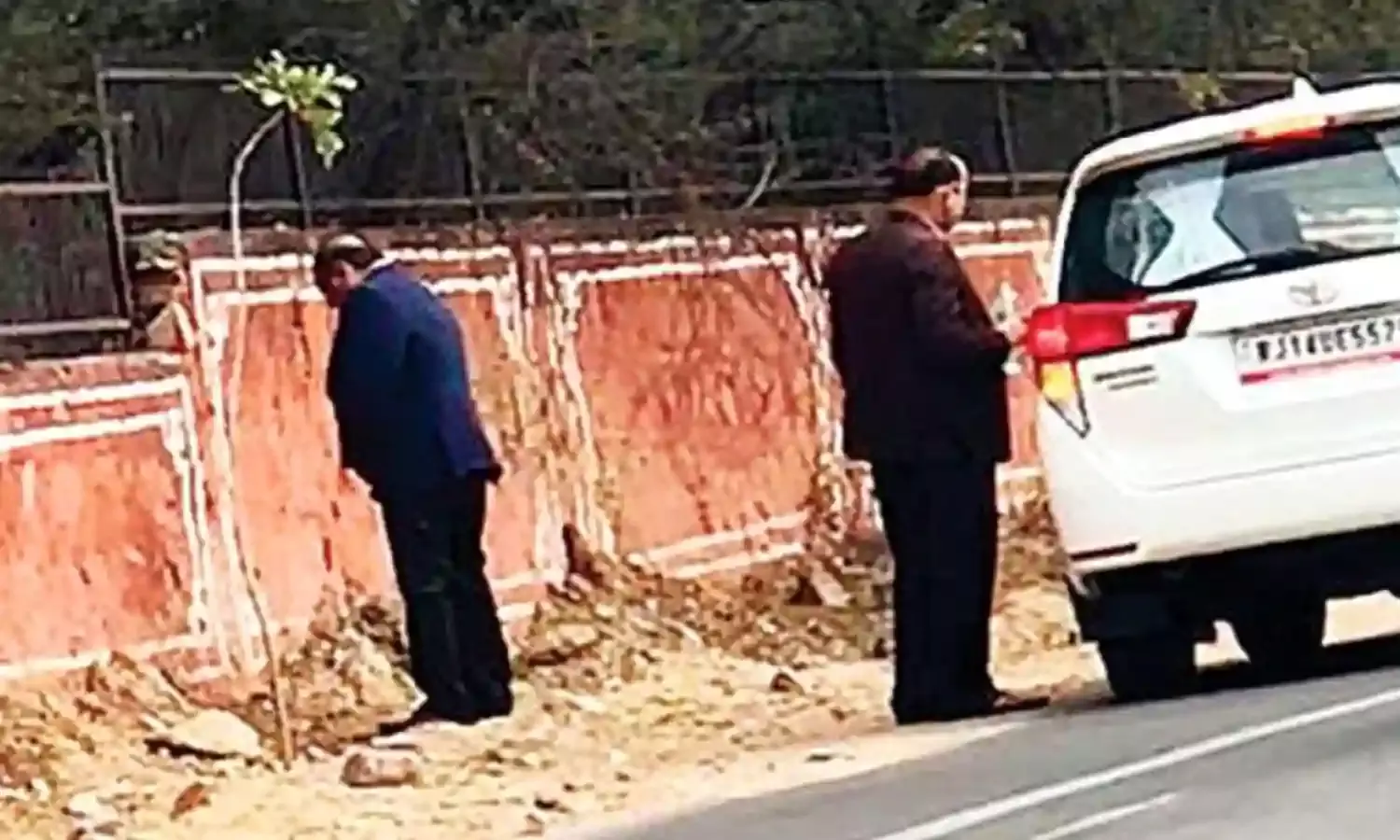Just a Wee Problem!
Our country needs more, and better, public toilets.

Often we recoil in horror at the infinite tolerance people seem to have to being surrounded with filth. It’s a common sight to see pile-ups of garbage, overflowing sewage, open drains and generally foul-smelling environs. Successive governments have naturally reflected the same traits, and while efforts are on to ‘clean up’… we have a long way to go.
For instance, step into any government hospital or office space, and the sight to behold is beyond ghastly.
Or here’s another sight for sore eyes: spend some time travelling around and you will see men openly urinating in public, without feeling any guilt or shame. Here a pee… there a pee… everywhere a pee pee! You may say it’s just a wee problem and just a bit of ‘pee’, but it is high time we tackle this dribbling menace.
Lately, there has been a public outcry against open defecation, and a movement to stop men from peeing anywhere and everywhere. Volunteers have begun shaming offenders by drumming or blowing whistles or photographing them or shaming them publicly. But one needs to see the bigger picture as well – our country needs more, and better, public toilets.
Some time back, I read a wonderful article which mentioned a technically good solution to discourage people from peeing in public. The technology involves coating the walls with hydrophobic paint. Such a wall will repel liquid (here urine) and splash it back in the direction whence it came. Such a cheap and cost-effective solution has helped the community in St Pauli, Germany, prevent drunk men from peeing on walls. One of them also referred to this solution and its effectiveness as ‘peeback-time’.
If such a technology is used in India, it may dissuade men at large from peeing on public walls. I hope municipal corporations across many cities in the country take a look at this plausible solution and prevent people from creating a nuisance in public spaces. There are also various approaches to tackling this and solutions have been suggested by those who want change. Painting pictures of Gods (of different religions?) on the walls could work to stop people from dumping garbage, peeing or spitting.
Since a lot of villages in India still don't have toilets in their home, or a proper supply of clean running water and a sewage system, nature’s call is answered by a walk to the nearest ground or fields. The aim should be to build public toilets in all villages, accessible to men, women and children. There is a dire need for functioning public toilets with running water, as the current available toilets do not match the demand. Every commercial space should have toilets. Petrol pumps must have toilets which must be well maintained. Unclean toilets are a big turn off.
On a casual day while driving around one tends to notice many things, but of these what crosses your eye is the unhealthy sight of a man standing with his face towards a wall. Yes, there you go - Peeing! Men of all categories: educated-uneducated. From a car owner to a rickshaw puller.
While the government’s sanitation and toilets initiative is on a roll since years, the agenda ever since has been to create toilets and not behavioural change. Dry latrines and septic tanks, besides often being fatal to those who are forced to clean them, are often the less hygienic alternative to relieving oneself out in the open. Without running water, how many of us would want a toilet in our homes?
If any act or law or policy is to be implemented in the country, the aim must be to first target the root behaviour. In this situation, we would all agree that the root problem in the country is the age-old practice of defecating and peeing outside in the open, and the age-old practice of considering matters of sewage and sanitation beneath our concern. As to the first, in the villages women and men both do it. But men are more open about it.
While the government works towards building more toilets in every household and street in India, targeting people’s psychology is very important for creating socially acceptable behaviour in this regard. There are two problems: the lack of well-equipped public toilets and the lack of an attitude towards NOT peeing in public. And as I blame the system for the first, I would blame each and every man for the second.
A while back, a woman was killed because she tried to stop a man from peeing outside her house at night. In Rajasthan last year, a group of government officials beat 55-year-old Zaffar Khan to death when he objected to their photographing women defecating in the open. These may be extraordinary cases, but this is what fighting for something wrong does to a person in this country.
They say that there is a fine for it. But tell me, when I see even the police doing it, who will be held responsible for levying that fine on these men? At the end of the day: It is Just a Wee Problem!
(Cover Photo: A photo of BJP politician Rajasthan Kalicharan Saraf, which went viral on social media)



